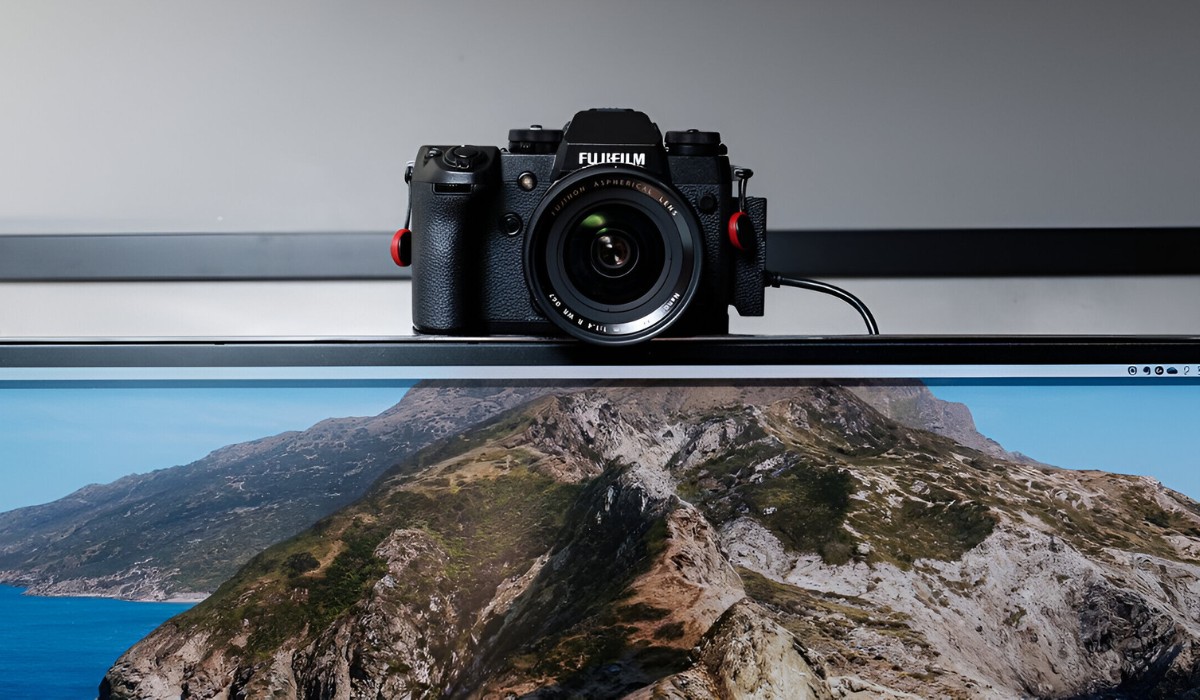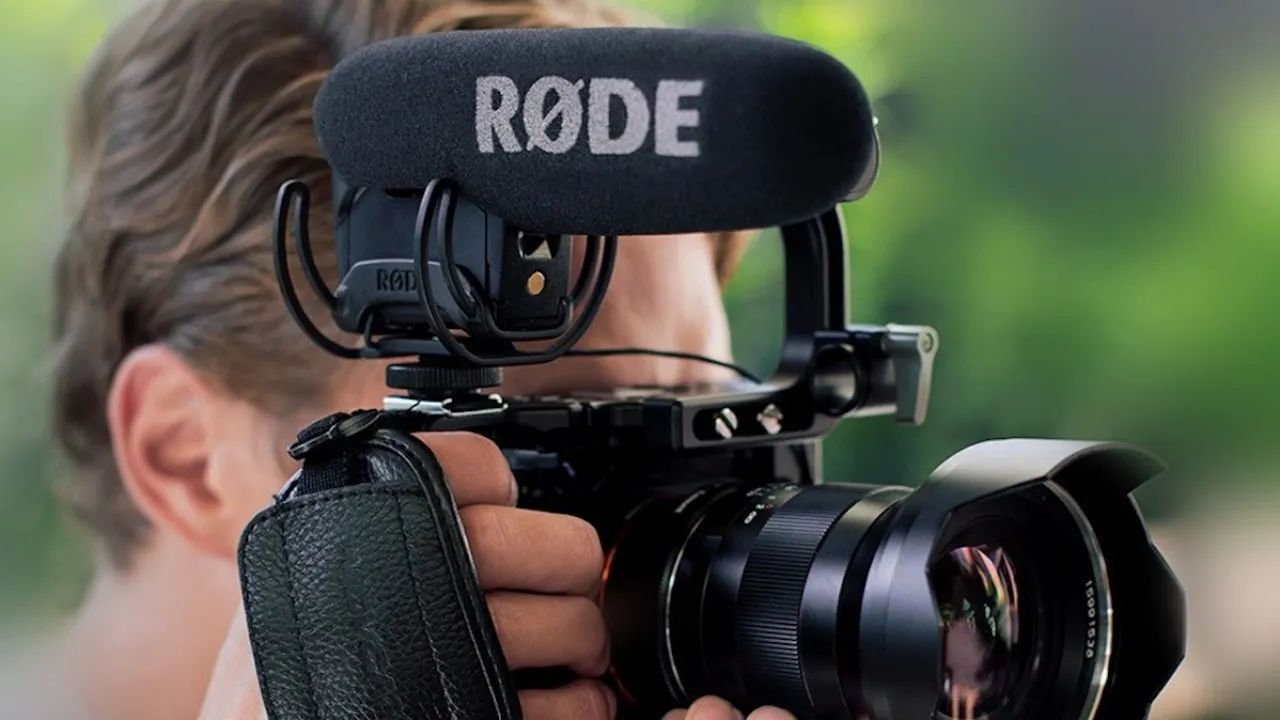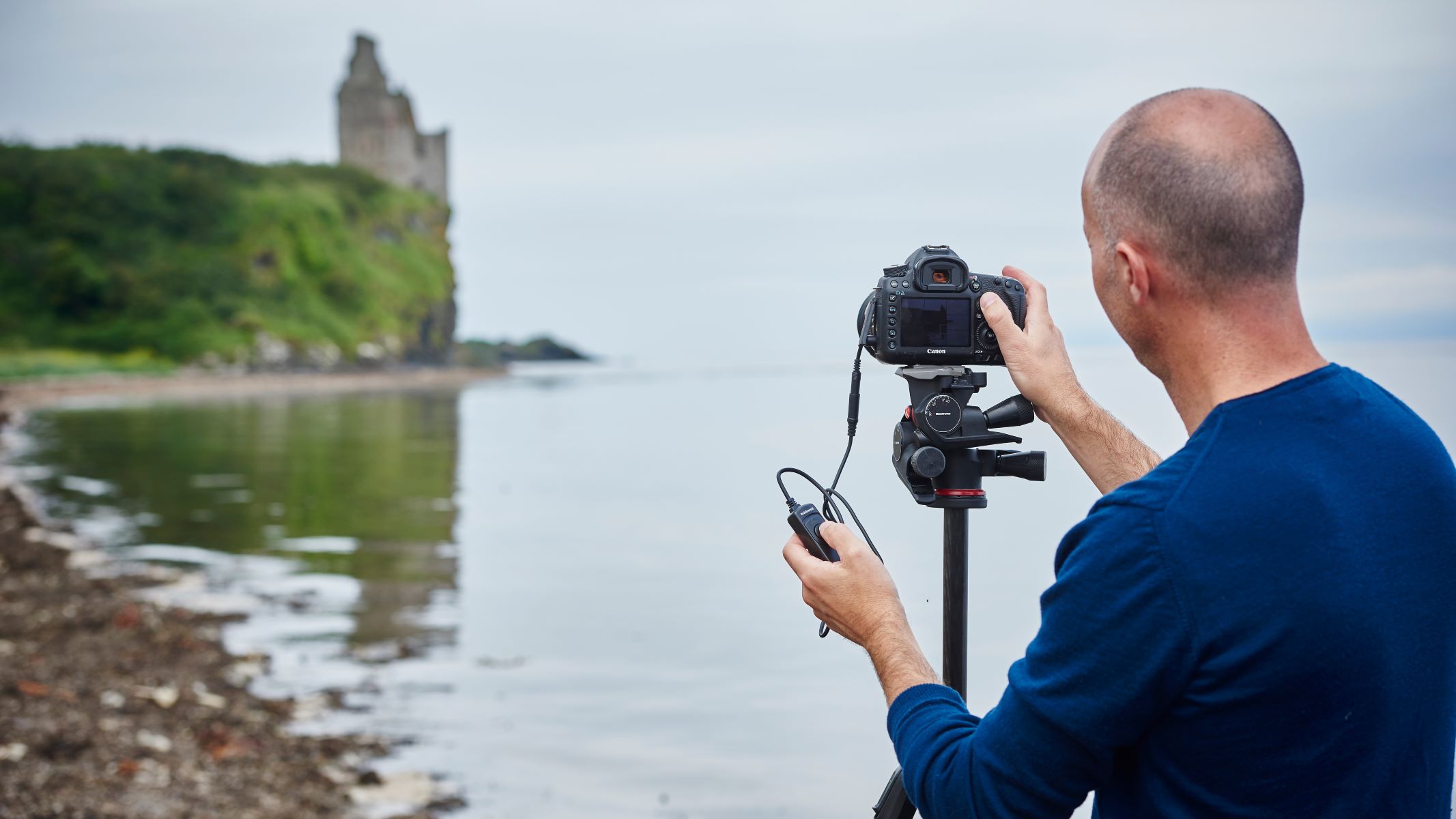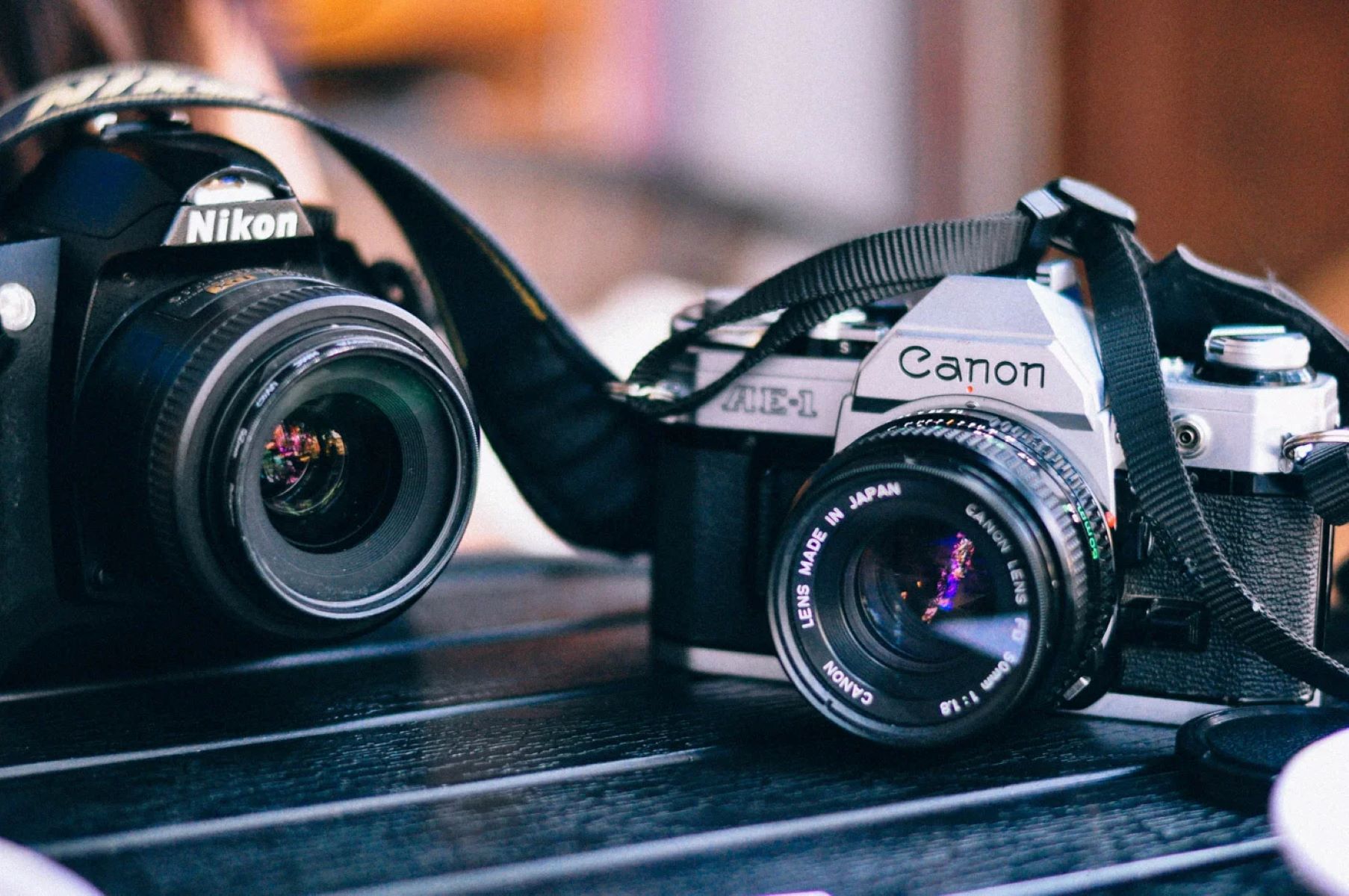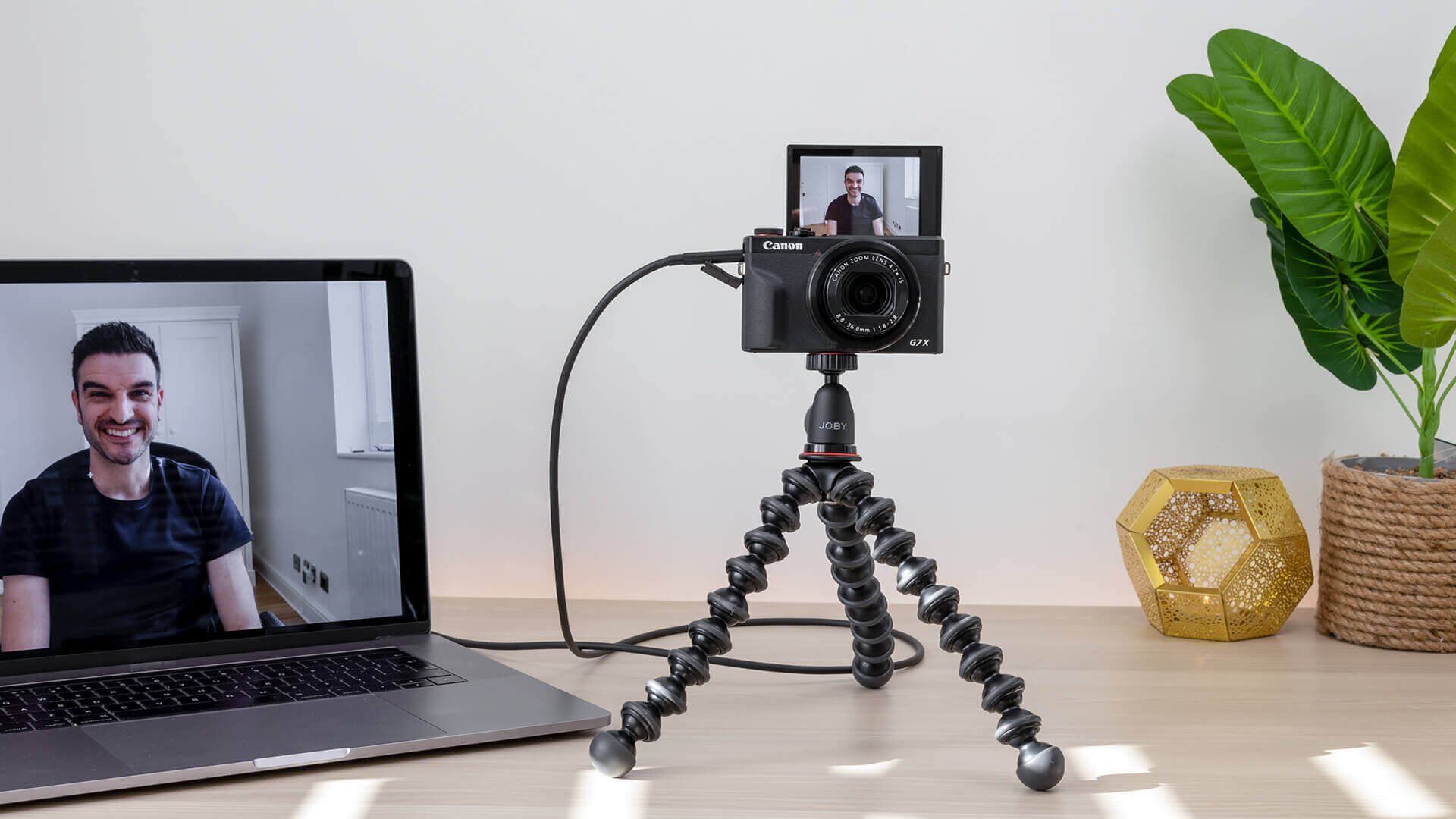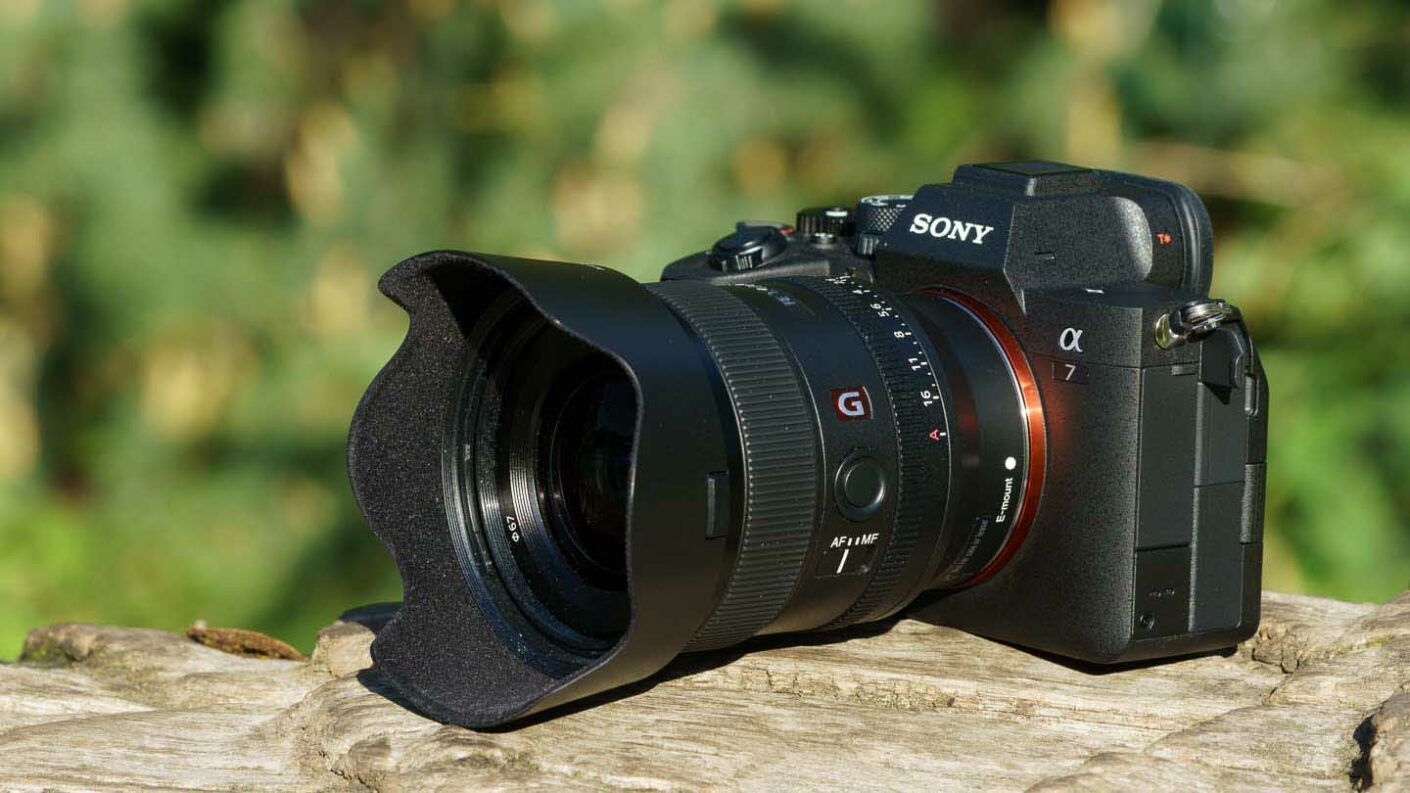Introduction
So, you've got your hands on a brand new DSLR camera, and you're ready to dive into the exciting world of photography. Congratulations! Owning a DSLR opens up a whole new realm of creative possibilities, allowing you to capture stunning, high-quality images with ease. Whether you're an aspiring photographer or a hobbyist looking to elevate your photography game, understanding how to operate a DSLR camera is the first step toward unlocking its full potential.
In this comprehensive guide, we'll walk you through the essential skills and techniques you need to master in order to harness the power of your DSLR. From grasping the fundamentals of exposure and composition to exploring advanced features and post-processing methods, this guide is designed to equip you with the knowledge and confidence to take your photography to the next level.
Photography is not just about pointing and shooting; it's about storytelling, creativity, and the art of capturing moments in time. With a DSLR in your hands, you have the tools to unleash your creativity and express your unique perspective through visually compelling images. Whether you're drawn to landscape photography, portraiture, street photography, or any other genre, mastering your DSLR will empower you to bring your creative vision to life.
Throughout this guide, we'll delve into the intricacies of manual mode, aperture, shutter speed, and ISO settings, as well as focusing techniques, lens selection, white balance, and composition tips. Additionally, we'll explore post-processing and editing techniques to enhance and refine your images after they've been captured.
By the end of this journey, you'll not only feel confident navigating the various settings and functions of your DSLR but also possess the knowledge to create visually captivating photographs that resonate with viewers on a deeper level.
So, grab your DSLR, charge up the battery, and get ready to embark on an enriching exploration of photography. Let's unlock the full potential of your DSLR camera and unleash your creativity behind the lens.
Understanding the Basics of a DSLR Camera
Before diving into the intricate features and settings of a DSLR camera, it’s crucial to develop a solid understanding of its fundamental components and how they work together to capture stunning images. Unlike point-and-shoot cameras or smartphone cameras, DSLRs offer a high level of manual control, allowing photographers to fine-tune every aspect of their shots. Let’s explore the key elements that form the foundation of a DSLR camera.
1. The Lens: One of the defining features of a DSLR is its interchangeable lens system. The lens plays a pivotal role in determining the composition, perspective, and overall look of the photograph. Understanding different types of lenses, such as wide-angle, telephoto, and prime lenses, empowers photographers to select the most suitable lens for each shooting scenario.
2. Image Sensor: The image sensor is the heart of a DSLR, responsible for capturing light and converting it into digital information. Common types of image sensors include APS-C and full-frame sensors, each offering unique advantages in terms of image quality and low-light performance.
3. Viewfinder and Live View: DSLRs feature an optical viewfinder, which allows photographers to compose their shots by looking through the lens. Additionally, most DSLRs offer a Live View mode, enabling photographers to preview the scene on the camera’s LCD screen, offering a more accurate representation of the final image.
4. Controls and Settings: DSLRs provide a plethora of manual controls and customizable settings, including aperture, shutter speed, ISO, and white balance. Familiarizing yourself with these controls and understanding how they impact exposure and creative effects is essential for harnessing the full potential of your DSLR.
5. Mirror and Shutter Mechanism: A defining feature of DSLRs is the presence of a mirror and a mechanical shutter. When the shutter button is pressed, the mirror flips up, allowing light to reach the image sensor, thereby capturing the image. Understanding the role of the mirror and shutter mechanism enhances your comprehension of the camera’s operation.
By gaining a solid grasp of these foundational elements, you’ll be better equipped to navigate the advanced features and capabilities of your DSLR camera. As we delve deeper into the intricacies of manual mode, exposure settings, and creative techniques, this foundational knowledge will serve as the bedrock of your photographic journey.
Mastering Manual Mode
One of the most empowering aspects of owning a DSLR camera is the ability to take full control of your photography through manual mode. While automatic and semi-automatic shooting modes can deliver satisfactory results in many situations, mastering manual mode grants you unparalleled creative freedom and precision in capturing images. Let’s delve into the key components of manual mode and how to harness its potential.
Understanding Exposure: Manual mode allows you to independently adjust the three pillars of exposure: aperture, shutter speed, and ISO. This level of control is invaluable in achieving the desired level of brightness, depth of field, and motion blur in your photographs. By comprehending the interplay between these settings, you can achieve the exact exposure you envision for your shots.
Aperture Control: In manual mode, you have the liberty to set the aperture, regulating the size of the lens opening. This directly influences the depth of field, determining how much of the scene is in focus. Mastering aperture control empowers you to create captivating portraits with creamy bokeh or expansive landscapes with crisp foreground-to-background sharpness.
Shutter Speed Mastery: With manual mode, you dictate the shutter speed, governing the duration for which the camera’s shutter remains open. This control is pivotal in freezing fast-moving subjects or capturing the graceful motion blur of flowing water or moving vehicles. Understanding the nuances of shutter speed elevates your ability to convey dynamism and emotion in your images.
ISO Sensitivity: Manual mode enables you to fine-tune the camera’s sensitivity to light by adjusting the ISO setting. This flexibility is essential when shooting in low-light conditions or when seeking to minimize digital noise in brightly lit scenes. Mastering ISO sensitivity empowers you to maintain optimal image quality across diverse lighting scenarios.
Exposure Triangle Mastery: Manual mode compels you to grapple with the exposure triangle, the intricate relationship between aperture, shutter speed, and ISO. By honing your understanding of this interplay, you gain the expertise to adapt to challenging lighting conditions and creative preferences, ensuring consistent, well-exposed photographs.
Mastering manual mode is a transformative milestone in your photographic journey, unlocking a realm of creative possibilities and technical finesse. As we delve deeper into the realm of exposure, composition, and post-processing techniques, the proficiency you gain in manual mode will serve as the cornerstone of your photographic expertise.
Utilizing Aperture, Shutter Speed, and ISO
Understanding the interplay between aperture, shutter speed, and ISO is fundamental to mastering exposure and achieving your desired creative effects in photography. These three elements form the cornerstone of the exposure triangle, and their judicious manipulation empowers you to capture images that resonate with your artistic vision. Let’s explore the significance of each parameter and how they contribute to the overall quality of your photographs.
Aperture: The aperture, represented by the f-stop value, regulates the size of the lens opening, controlling the amount of light that enters the camera. Additionally, aperture dictates the depth of field, influencing the extent to which the foreground and background are in focus. Utilizing a wide aperture (small f-stop number) produces a shallow depth of field, ideal for isolating subjects against a blurred background, while a narrow aperture (larger f-stop number) expands the depth of field, suitable for capturing expansive landscapes with sharp detail throughout the frame.
Shutter Speed: Shutter speed determines the duration for which the camera’s shutter remains open, exposing the image sensor to light. This setting is pivotal in freezing fast-moving subjects with a swift shutter speed or conveying motion blur with a slower shutter speed. By mastering shutter speed, you can freeze the action in sports photography, capture the graceful movement of flowing water, or experiment with long exposure techniques to create compelling visual effects.
ISO Sensitivity: ISO measures the camera sensor’s sensitivity to light, with lower ISO values suitable for brightly lit environments and higher ISO values employed in low-light conditions. However, increasing the ISO also amplifies digital noise, potentially degrading image quality. Understanding how to judiciously adjust the ISO setting enables you to maintain optimal image quality while shooting in diverse lighting scenarios, striking a balance between brightness and noise.
Exposure Compensation: In certain situations, you may need to override the camera’s automatic exposure settings to achieve the desired brightness levels. Utilizing exposure compensation in conjunction with aperture, shutter speed, and ISO grants you precise control over the exposure, ensuring that your images accurately reflect the mood and ambiance of the scene.
By harnessing the potential of aperture, shutter speed, and ISO, you wield the power to craft visually compelling images that convey your unique perspective and creative intent. As we delve deeper into advanced focusing techniques, lens selection, and composition principles, the mastery of these fundamental elements will underpin your ability to capture captivating photographs across a diverse range of genres and shooting conditions.
Focusing Techniques
Mastering focusing techniques is essential for achieving sharp, well-defined images that draw the viewer’s attention to the intended subject. Whether you’re capturing fast-moving action or composing a tranquil landscape, understanding the intricacies of focusing empowers you to consistently achieve precise and compelling results. Let’s explore the various focusing methods and how they can elevate the quality of your photographs.
Single Point Autofocus: This method allows you to manually select a specific focus point within the frame, offering precise control over the area of focus. By aligning the chosen focus point with your intended subject, you ensure that the camera accurately locks onto the target, resulting in crisp, well-defined details. Single point autofocus is particularly advantageous in situations where you need to isolate a specific element within the composition, such as a subject’s eyes in portrait photography.
Continuous Autofocus: Continuous autofocus, also known as AI Servo (Canon) or AF-C (Nikon), is invaluable when capturing moving subjects, such as wildlife, sports, or dynamic street scenes. This mode continuously adjusts the focus to track and keep pace with the subject as it moves within the frame, ensuring that it remains sharp and in focus throughout the sequence of shots. By leveraging continuous autofocus, you can confidently tackle challenging scenarios that demand swift and accurate focus adjustments.
Manual Focus: While autofocus systems have advanced significantly, there are instances where manual focus provides unparalleled precision and creative control. In situations with low contrast or complex compositions, manually fine-tuning the focus allows you to override the camera’s autofocus system and achieve pinpoint accuracy. Additionally, manual focus is a favored technique in macro photography and landscape photography, where meticulous attention to detail is paramount.
Back-Button Focus: This technique involves decoupling the autofocus function from the shutter button and assigning it to a dedicated button on the rear of the camera. By separating the act of focusing from the shutter release, you gain greater flexibility in initiating and maintaining focus, especially in scenarios where you need to recompose the shot without losing the established focus point. Back-button focus offers enhanced control and streamlines the focusing process, particularly in dynamic shooting situations.
By mastering these focusing techniques and understanding their applications across different genres of photography, you elevate your ability to consistently capture images with tack-sharp focus and visual impact. As we delve deeper into the realm of lens selection, white balance, and composition principles, the proficiency you gain in focusing techniques will serve as a cornerstone of your photographic expertise, ensuring that your subjects are rendered with precision and clarity in every shot.
Using Different Lenses
One of the most compelling aspects of owning a DSLR camera is the ability to explore a diverse range of lenses, each offering unique perspectives, creative opportunities, and technical capabilities. Understanding the characteristics and applications of different lenses empowers you to expand your photographic repertoire and capture captivating images across various genres. Let’s delve into the significance of different lenses and how they can enrich your photography.
Wide-Angle Lenses: Wide-angle lenses, typically ranging from 14mm to 35mm, excel in capturing expansive scenes, such as sweeping landscapes, architectural marvels, and immersive environmental portraits. Their broad field of view allows you to emphasize spatial relationships and create dramatic perspectives, making them indispensable for visual storytelling and dynamic compositions.
Telephoto Lenses: Telephoto lenses, with focal lengths typically exceeding 70mm and extending to 300mm or more, are prized for their ability to magnify distant subjects and compress the perspective, making them ideal for wildlife photography, sports events, and intimate portraiture. Their narrow angle of view enables you to isolate subjects from their surroundings, emphasizing intricate details and evoking a sense of intimacy and visual impact.
Prime Lenses: Prime lenses, characterized by a fixed focal length (e.g., 35mm, 50mm, 85mm), are revered for their exceptional optical quality, wide apertures, and compact form factors. Renowned for their tack-sharp image rendition and impressive low-light performance, prime lenses are favored for portraiture, street photography, and documentary work, offering a compelling blend of artistic expression and technical finesse.
Macro Lenses: Macro lenses are specifically designed to capture intricate details at close range, making them indispensable for capturing the delicate beauty of flora, fauna, and small-scale subjects. With the ability to achieve life-size reproduction ratios and exceptional optical clarity, macro lenses unlock a mesmerizing world of textures, patterns, and subtle nuances, inviting viewers to appreciate the exquisite intricacies of the natural world.
Zoom Lenses: Zoom lenses offer versatile focal length ranges, allowing you to seamlessly adjust the composition and framing without changing lenses. From wide-angle to telephoto capabilities, zoom lenses are prized for their adaptability in dynamic shooting scenarios, making them ideal for travel photography, events, and everyday shooting situations where swift focal length adjustments are essential.
By familiarizing yourself with the characteristics and applications of different lenses, you expand your creative horizons and equip yourself to tackle diverse photographic challenges with confidence and finesse. As we venture further into the realm of white balance, composition principles, and post-processing techniques, the versatility and creative potential offered by different lenses will enrich your ability to capture compelling and visually captivating images across a spectrum of subjects and environments.
Understanding White Balance
White balance is a critical yet often overlooked aspect of photography that profoundly influences the overall color rendition and mood of your images. It refers to the adjustment of the color temperature in your photographs to ensure that whites appear truly white, regardless of the lighting conditions. By comprehending white balance and its impact on the visual narrative of your photographs, you can convey accurate color representation and evoke specific emotional tones within your imagery.
Color Temperature: The concept of color temperature is derived from the color of light emitted by a theoretical object when heated to a specific temperature, measured in degrees Kelvin (K). Lower color temperatures (e.g., 2500K to 4000K) are associated with warm, amber hues, while higher color temperatures (e.g., 5000K to 7500K) yield cooler, bluish tones. Understanding color temperature forms the basis of adjusting white balance to achieve faithful color reproduction in diverse lighting environments.
Preset White Balance Settings: DSLR cameras offer a range of preset white balance settings, including daylight, cloudy, shade, tungsten, fluorescent, and flash. Each preset corresponds to specific color temperature values, enabling you to harmonize the camera’s color interpretation with the prevailing lighting conditions. By selecting the appropriate white balance preset, you ensure that the colors in your photographs remain true to life and visually compelling.
Custom White Balance: In situations where the available presets do not accurately align with the lighting conditions, custom white balance empowers you to calibrate the camera’s color interpretation to a specific light source. By capturing a reference image of a neutral gray or white surface under the prevailing lighting and using it to set a custom white balance, you achieve precise color accuracy and eliminate unwanted color casts, ensuring that your photographs faithfully represent the scene’s ambiance.
White Balance Bracketing: White balance bracketing involves capturing multiple images with varying white balance settings to explore different color interpretations of the same scene. This technique is particularly useful in uncertain or mixed lighting scenarios, allowing you to select the most visually appealing color rendition during post-processing. By experimenting with white balance bracketing, you can refine the emotional impact of your images and imbue them with distinct visual character.
By mastering the nuances of white balance, you ensure that the colors in your photographs remain faithful to the scene’s ambiance and your artistic intent. As we delve deeper into advanced composition principles, post-processing techniques, and the art of visual storytelling, the proficiency you gain in understanding and manipulating white balance will enrich the emotional resonance and visual allure of your photographs, elevating them to a new level of expressive and impactful imagery.
Tips for Better Composition
Composition is the art of arranging elements within a frame to create visually engaging and impactful photographs. By honing your compositional skills, you can elevate the aesthetic appeal and storytelling potency of your images, capturing the viewer’s attention and conveying your artistic vision with clarity and finesse. Let’s explore a selection of tips and techniques for enhancing the composition of your photographs.
Rule of Thirds: The rule of thirds is a fundamental guideline that involves dividing the frame into a 3×3 grid and positioning key elements along the gridlines or at their intersections. This approach creates a sense of balance and visual interest, guiding the viewer’s gaze and imbuing the composition with dynamic energy. By adhering to the rule of thirds, you can infuse your images with a harmonious and compelling visual structure.
Leading Lines: Incorporating leading lines, such as roads, fences, or architectural features, guides the viewer’s eye into the scene and toward the main subject, creating a sense of depth and narrative progression. By leveraging leading lines, you can imbue your compositions with a captivating sense of direction and visual flow, drawing the viewer into the heart of the narrative.
Negative Space: Embracing negative space, the areas of the frame devoid of significant visual content, can lend a sense of minimalism and emphasis to the main subject. By judiciously incorporating negative space, you allow the subject to breathe within the frame, evoking a mood of tranquility, isolation, or contemplation, depending on the context and narrative intent.
Foreground Interest: Introducing compelling elements in the foreground, such as foliage, textures, or objects, adds depth and dimension to the composition, creating a sense of immersion and visual layering. By paying attention to foreground interest, you enrich the visual narrative and invite the viewer to explore the scene with a heightened sense of engagement and curiosity.
Visual Balance: Striving for visual balance in your compositions ensures that the elements within the frame harmonize with each other, creating a sense of equilibrium and aesthetic cohesion. Whether through symmetrical arrangements or carefully calibrated asymmetry, visual balance imbues your images with a sense of order and visual satisfaction, enhancing their overall impact.
By integrating these compositional tips into your photographic practice, you can infuse your images with a compelling sense of visual allure and narrative resonance. As we venture further into the realm of post-processing techniques, advanced focusing methods, and the art of visual storytelling, the proficiency you gain in composition will underpin your ability to capture images that resonate with depth, emotion, and visual impact, ensuring that your artistic vision is communicated with clarity and power.
Post-Processing and Editing Techniques
Post-processing and editing play a pivotal role in refining and enhancing your photographs, allowing you to elevate their visual impact, correct imperfections, and imbue them with a distinct artistic style. By mastering post-processing techniques, you can unleash the full potential of your images, transforming them into compelling visual narratives that resonate with viewers. Let’s explore a selection of essential post-processing methods and editing strategies to refine your photographs.
Color Correction: Adjusting color balance, saturation, and vibrancy enables you to fine-tune the overall color rendition of your images, ensuring that they accurately reflect the mood and ambiance of the scene. By harmonizing and enhancing the colors, you can evoke specific emotional tones and convey a sense of visual depth and richness in your photographs.
Exposure Adjustment: Fine-tuning exposure, shadows, highlights, and contrast empowers you to optimize the tonal range and brightness levels within your images. This allows you to rescue details from shadows, tame highlights, and achieve a balanced and visually appealing exposure, ensuring that your photographs exude clarity and visual impact.
Sharpening and Detail Enhancement: Applying selective sharpening and detail enhancement techniques refines the overall sharpness and clarity of your images, accentuating textures, intricate details, and fine elements within the frame. By enhancing the visual acuity and crispness of your photographs, you invite viewers to immerse themselves in the captivating intricacies of the scene.
Cropping and Composition Refinement: Utilizing cropping and composition refinement, you can reframe the composition, adjust the aspect ratio, and eliminate distracting elements, directing the viewer’s attention to the core subject and narrative essence of the image. This process enables you to fine-tune the visual structure and storytelling potency of your photographs, ensuring that every element within the frame contributes to the overall impact.
Artistic Filters and Effects: Experimenting with artistic filters, creative effects, and stylized treatments allows you to imbue your images with a distinct visual character and emotive resonance. Whether through vintage-inspired toning, dramatic black and white conversions, or ethereal softening effects, artistic filters and effects offer a realm of creative possibilities to infuse your photographs with a unique and compelling aesthetic.
By embracing these post-processing and editing techniques, you can refine and elevate your photographs to new heights of visual allure and expressive impact. As you continue to explore the art of visual storytelling, advanced focusing methods, and the intricacies of white balance, the proficiency you gain in post-processing and editing will serve as a powerful tool to convey your artistic vision with clarity, depth, and emotive resonance, ensuring that your photographs leave a lasting impression on viewers.









